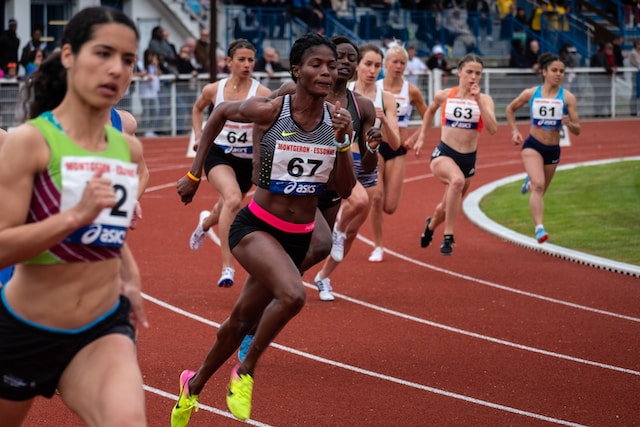Endurance athletes are no strangers to adversity. The relentless pursuit of long-distance goals demands not only physical strength but also unwavering mental resilience. Kara Goucher, a renowned American long-distance runner, has faced her fair share of challenges throughout her career. Her journey is a testament to the power of resilience, offering valuable strategies for endurance athletes seeking to overcome obstacles and push their limits.
Goucher’s endurance running career has been marked by remarkable accomplishments and unforeseen setbacks. From grueling training schedules to injuries and unexpected disappointments, she has navigated a challenging path with grace and determination. Her ability to rise above adversity serves as a source of inspiration for endurance athletes worldwide.
One of Goucher’s key resilience strategies lies in maintaining a strong support system. She emphasizes the importance of surrounding oneself with individuals who understand the physical and mental demands of endurance sports. Coaches, teammates, and loved ones provide not only encouragement but also a network of understanding and empathy. Goucher’s experience highlights the power of shared experiences and the role of a support system in helping athletes weather the storms that come with endurance training.
Resilience Strategy #1: Foster a strong support system. Endurance athletes should seek out like-minded individuals who can provide emotional support, share experiences, and offer guidance. Whether it’s training partners, coaches, or mentors, having a support system that understands the unique challenges of endurance sports can provide the motivation and encouragement needed to navigate difficult times.
In addition to the support system, Goucher stresses the importance of setting realistic goals. Endurance sports require long-term commitment and gradual progress. Setting achievable milestones along the way helps athletes maintain focus and measure their growth. Goucher’s own career is a testament to the power of setting incremental goals, whether it’s improving race times or conquering new distances. By breaking down the larger goal into smaller, attainable targets, endurance athletes can build resilience by celebrating each milestone achieved.
Resilience Strategy #2: Set realistic and attainable goals. Endurance athletes should establish short-term objectives that align with their long-term aspirations. These goals should be challenging yet attainable, providing a sense of accomplishment and fueling motivation. Celebrating each milestone along the way helps maintain resilience and a positive mindset.
Furthermore, Goucher’s journey has been marked by her ability to adapt and embrace change. As an endurance athlete, she understands the importance of flexibility in training plans and strategies. Injuries, unforeseen circumstances, or changes in competition schedules can disrupt the best-laid plans. Goucher’s resilience lies in her willingness to adapt to new circumstances, adjusting her training, and finding innovative solutions. This adaptability allows her to navigate obstacles while staying focused on her ultimate goals.
Resilience Strategy #3: Embrace adaptability. Endurance athletes should be prepared for unexpected challenges and be willing to adjust their training and strategies accordingly. Flexibility in the face of adversity allows athletes to find alternative paths to success, ensuring that setbacks do not derail their progress.
In conclusion, Kara Goucher’s resilience strategies offer valuable insights for endurance athletes navigating the challenges of long-distance sports. By fostering a strong support system, setting realistic goals, and embracing adaptability, athletes can build resilience and overcome the obstacles that come their way. Goucher’s journey serves as a reminder that endurance sports require not only physical strength but also mental fortitude. With determination, perseverance, and a resilient mindset, endurance athletes can conquer adversity and achieve their goals, pushing the boundaries of what they thought was possible.




